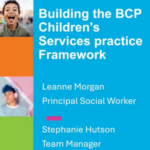
The social care means-testing thresholds are being frozen for a 15th consecutive year, dragging more people into having to self-fund their care.
The upper and lower capital limits governing access to care in England in 2025-26 will remain at levels set in 2010, the Department of Health and Social Care (DHSC) said yesterday in its annual social care charging circular.
This means people with assets worth more than £23,250 will continue having to fully fund their care unless their council sets a more generous threshold for services other than permanent care home placements, which very few do.
Anyone with assets worth less than £14,250 will not have to contribute to their care from these, though they will be required to make use of their income to finance services, as now. Those with savings between the two figures must contribute up to £36 per week to their care from these assets.
The thresholds include the value of the person’s home if they are in a permanent care home placement and their home is not occupied by their partner, a relative aged 60 or over or who is incapacitated or a child.
More people being pulled into funding care
According to the Bank of England’s inflation calculator, had they been adjusted for inflation since 2010, the upper threshold would now be worth about £35,250 and the lower threshold £21,600.
This means significantly more people are paying for at least some of their care because of successive governments’ failure to increase the rates in line with the cost of living.
The news follows the government’s decision to scrap its predecessor’s plan to reform the adult social care charging system in England, which would have increased the upper capital threshold to £100,000, making many more people eligible for council-funded care.
Casey commission on social care
The reform was originally due to come into force in 2016, but has been delayed or dropped by successive governments.
Instead of taking it forward, the current government has announced a commission on social care – headed by Baroness (Louise) Casey – to examine the key issues facing the sector today before recommending changes designed to help achieve the government’s ambition of creating a ‘national care service’.
However, ministers have faced significant criticism – including from Andrew Dilnot, the architect of the dropped charging reforms – for deferring Casey’s final report until 2028.
How means-testing thresholds in England compare
The means-test limits in England are less generous than those for Scotland and Wales.
In Scotland, personal care is free, and the means-test thresholds for residential accommodation, which operate similarly to the limits in England, have risen in line with inflation in recent years. They currently stand at £21,500 (lower) and £35,000 (upper).
In Wales, there is a single capital limit for accessing residential care – £50,000 – below which people’s assets are protected from care charges, though this has not risen since 2019. There is a lower threshold for non-residential care, £24,000, which has been in place since at least 2010; however, home care charges are capped in Wales, at £100 per week, with no such limit existing in England.
Northern Ireland has the same capital limits for residential care as England, but the region’s health and social care trusts generally do not charge for care at home.
Income protections rise in line with inflation
England’s minimum income guarantee (MIG), which provides a floor below which a person’s income must not fall as a result of charges for community-based care, will rise in line with inflation – which the government has measured as 1.7% – in April 2025.
For a single person aged 25-65, the weekly rate will increase from £110.60 to £112.50 from April, while for a couple, one of whom is aged 66 or over, it will rise from £174.60 to £177.55.
There will also be a 1.7% increase to the personal expenses allowance (PEA), the minimum sum council-funded care home residents must be left with after charging, which will rise from £30.15 to £30.65 a week.
In addition, an inflationary increase will be applied to the savings credit disregard, an extra sum eligible pensioners are allowed to keep above the MIG or PEA. This will rise from £6.95 to £7.05 per week for individuals and from £10.40 to £10.60 for couples.







 Bournemouth, Christchurch and Poole
Bournemouth, Christchurch and Poole  Hampshire County Council
Hampshire County Council  Oxfordshire County Council
Oxfordshire County Council  South Gloucestershire Council
South Gloucestershire Council  Wokingham Borough Council
Wokingham Borough Council  Webinar: building a practice framework with the influence of practitioner voice
Webinar: building a practice framework with the influence of practitioner voice  ‘They don’t have to retell their story’: building long-lasting relationships with children and young people
‘They don’t have to retell their story’: building long-lasting relationships with children and young people  Podcast: returning to social work after becoming a first-time parent
Podcast: returning to social work after becoming a first-time parent  How managers are inspiring social workers to progress in their careers
How managers are inspiring social workers to progress in their careers  Workforce Insights – showcasing a selection of the sector’s top recruiters
Workforce Insights – showcasing a selection of the sector’s top recruiters 

 Facebook
Facebook X
X LinkedIn
LinkedIn Instagram
Instagram
I support people with a learning disability both in our residential home and also in our supported living houses. How can the PEA at £30.65 be considered fair or realistic for those in a residential setting. If we think about what an individual might need to purchase – clothes and shoes / toiletries / sweet treats / a birthday gift for a relative – this small sum does not go very far. Compared to those who live in supported living this is so unfair and unbalanced – and almost discriminatory. This makes me very cross.
This also means that more people will lose the right to require a local authority to meet eligible needs through the provision of residential care. Section 8.56 of the Care and Support Statutory Guidance states: “People with eligible needs and financial assets above the upper capital limit may ask the local authority to meet their needs… Where the person asks the local authority to meet their eligible needs, and it is anticipated that their needs will be met by a care home placement, then the local authority may choose to meet their needs, but is not required to do so”.
Perhaps we could look at this from a different angle (I write as a 75-year-old retired social worker) as I understand it if I have less than £14,000 worth of savings all social care, domestic or.residential is free.
If I am in need of any of those services why would I need £14,000 in the bank?
The only reason I can think of is that my offspring want to benefit from my death ,for the record my loved ones have benefited (financially) from my life I take the view that delayed gratification is a good thing but only if you are still young enough to enjoy it!
I know this is a simplistic view and for the record I have a decent pension, I do own my own house and I do have a lot less than £14,000 savings
I do accept that if I was in rented accommodation this would alter my perspective drastically
Anyone else want to discuss?
Tim £14,250 is the point you start paying capital tariff. Even if you have zero in savings you may still have to contribute from your income. It isn’t free for anyone unless they are s117 or fully health funded or have been assessed as nil fee.
Just gets to the point more people end up in debt to the local authority for the charges. People getting up yo and over 20k of debt. Then it’s the Social worker/care officers role to chase the debt